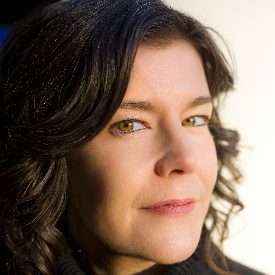This post is in honor of my friend Daphna Stern, a wonderful singer. Daphna is kind and radiant, and she has a naturally regal bearing and gorgeous voice. And yet, and yet, she’s shy, especially at the microphone. She asked me for tips on beating performance anxiety.
My first reaction was “Ha!,” as I’ve never managed to vanquish my own public speaking jitters. But then I thought about it and realized that my anxiety is much more manageable than it was when I first started speaking. In fact, I’m starting to gear up for a heavy speaking schedule, to promote QUIET – and I find that I’m really excited about it. Ten years ago, I would not have believed it possible for me to feel this way.
So, here are my top five tips:
1. Don’t expect to eradicate your fear altogether.

Trending: Navy SEAL Secrets for High Performance Under Pressure
Instead, learn to live with it. As Charles di Cagno, Director of the Public Speaking Center of New York, once told me, “Only a few people can totally conquer their anxiety, and they all live in Tibet.”
For many people, the fear of public performance is a “conditioned fear” that they acquired in childhood, when they were made to perform and had a bad experience. The brain learns quickly to avoid danger – this is one of our most important survival mechanisms – and once it decides that audiences are scary, it’s not about to change its mind. Fear associations are stored in a small organ in the brain called the amygdala, and there they remain for the rest of our lives. (This is why teachers should be very careful about training young children in public speaking. But that’s a post for another day.)
2. De-sensitization.
BUT, if we can’t eliminate our fears, we can learn to inhibit them. One great way to do this is through a technique called “de-sensitization.” This means exposing yourself to the thing you’re afraid of – an audience – repeatedly, but in small doses that you can handle. You want to create a new pattern of associations in your brain, between audiences and pleasure, or at least audiences and ease. In effect, you’re putting up a new layer of mental wallpaper. The old layer, the one that associates audiences with danger, will always be there underneath, and it’ll show lumpily through in places. But mostly you get to enjoy your new wallpaper.
It’s for this reason that many people (like me!) join organizations like Toastmasters, where they can practice public speaking in small, supportive groups.*
Trending: How to Make Menopause the Best Time of Your Life
3. Videotape yourself before your performance.
 As I’ve written here, you should do a dress rehearsal, ON CAMERA, to see if your presentation works. Some of your performance anxiety is well-founded – you have no clue how you’re coming across, and that is inherently unsettling. If you went to a job interview without fixing your tie or applying your lipstick in front of the mirror, you’d have a lot of needless anxiety. You would hope that there’s no scarlet lip gloss smeared across your teeth, but how could you know for sure? Take the guesswork out of it.
As I’ve written here, you should do a dress rehearsal, ON CAMERA, to see if your presentation works. Some of your performance anxiety is well-founded – you have no clue how you’re coming across, and that is inherently unsettling. If you went to a job interview without fixing your tie or applying your lipstick in front of the mirror, you’d have a lot of needless anxiety. You would hope that there’s no scarlet lip gloss smeared across your teeth, but how could you know for sure? Take the guesswork out of it.
4. Activate your “Go System.”
 As I’ve written about here and here, everyone has both a Stop System and a Go System in their bodies. Your Go system revs you up and makes you excited. Your Stop system (which includes your amygdala) slows you down and makes you cautious and vigilant. The Stop system is an evolutionarily ancient mechanism; it helped your ancestors notice that what appeared to be a harmless rock was actually a tightly coiled snake.
As I’ve written about here and here, everyone has both a Stop System and a Go System in their bodies. Your Go system revs you up and makes you excited. Your Stop system (which includes your amygdala) slows you down and makes you cautious and vigilant. The Stop system is an evolutionarily ancient mechanism; it helped your ancestors notice that what appeared to be a harmless rock was actually a tightly coiled snake.
The best way to override your Stop system is to stimulate your Go system when you’re getting ready to perform. Do something that makes you feel “up” and excited. Call a friend who makes you laugh. Smile at people in the audience. Jump up and down backstage to happy music.
5. Remember that your job as a performer is to give, not to be perfect.
Trending: Microsoft, Google, and Beyond: What Business at the Cutting-Edge of AI Looks Like
You are there to share something of value with your audience. I have heard Daphna sing — and I have heard her stumble over a word or two. So what? Her voice, and her presence, are so warm and beautiful that her singing gives me goose-bumps, and precious moments of transcendence.
































